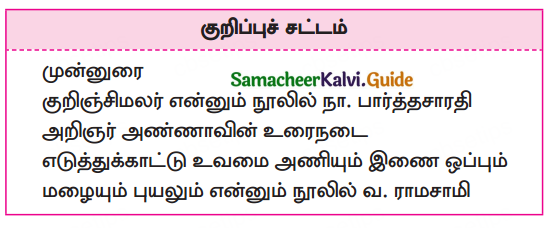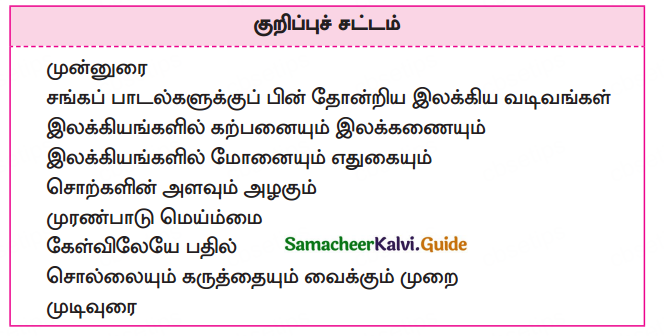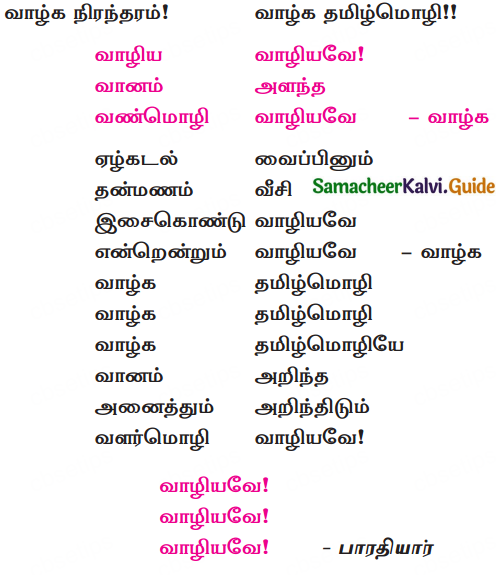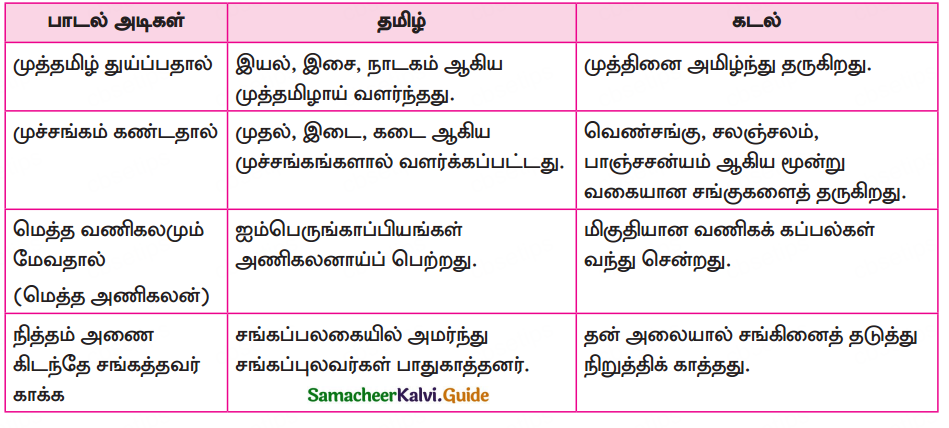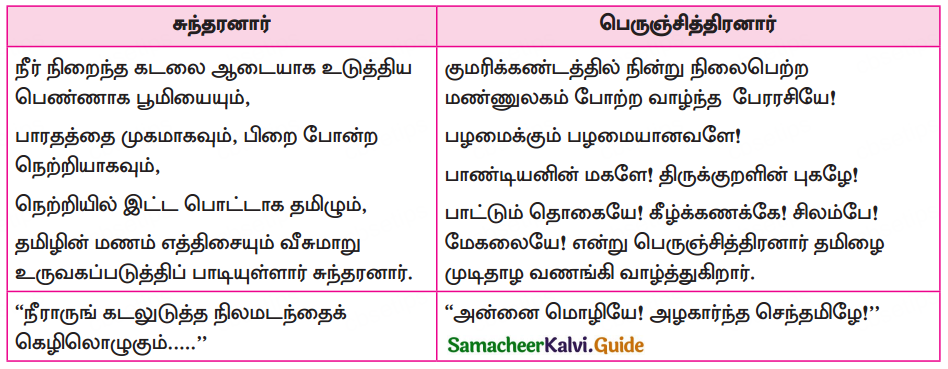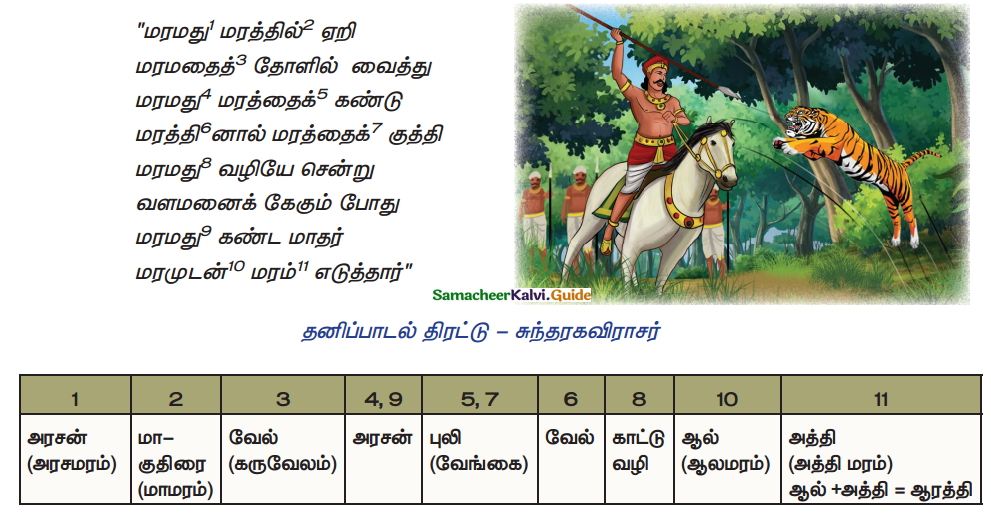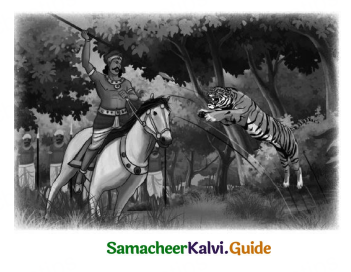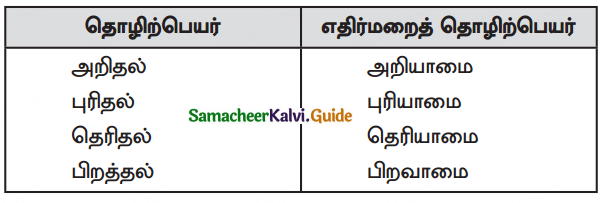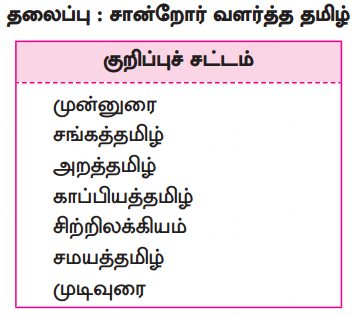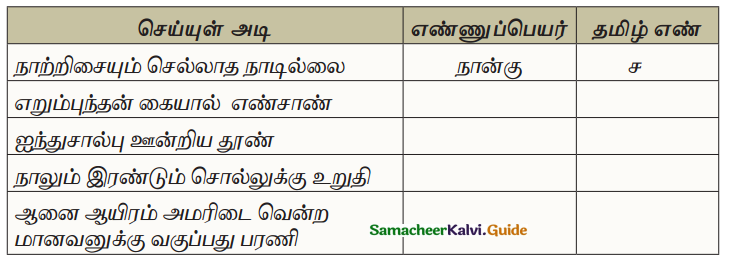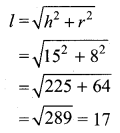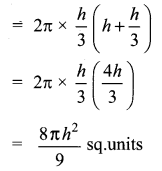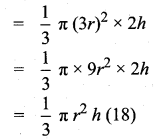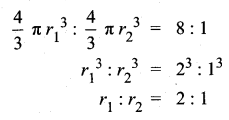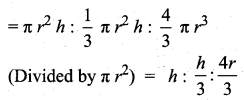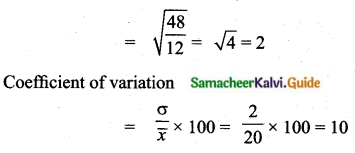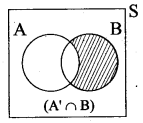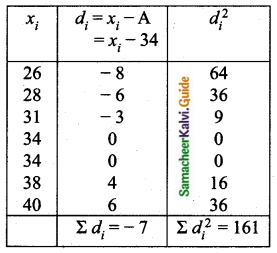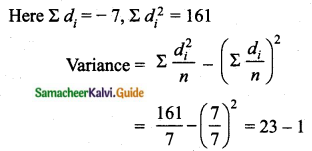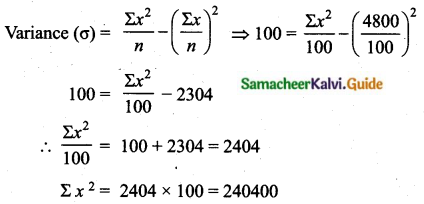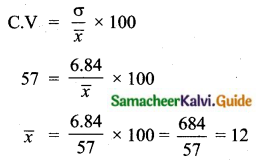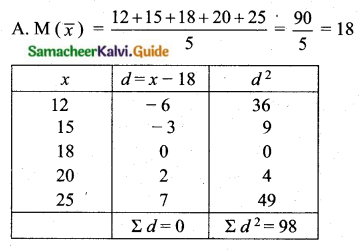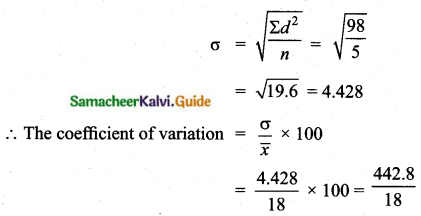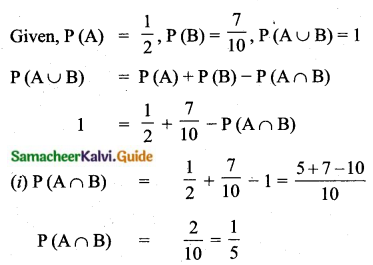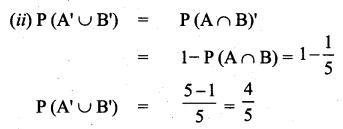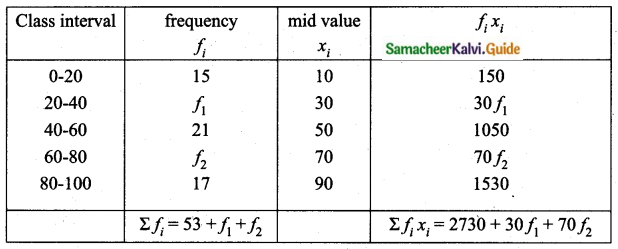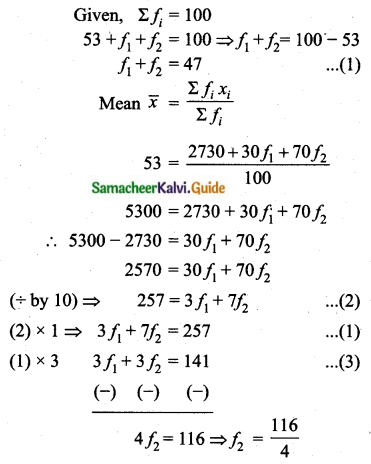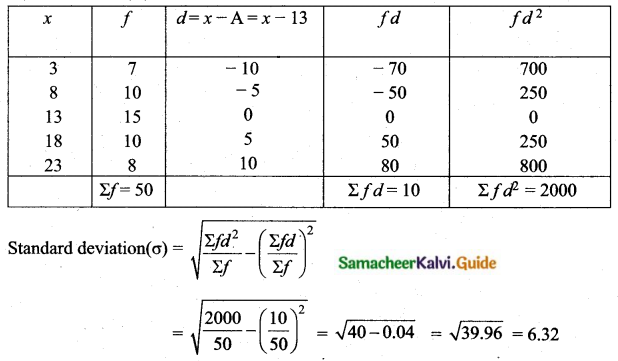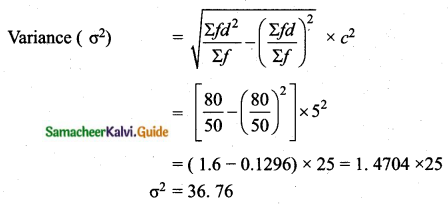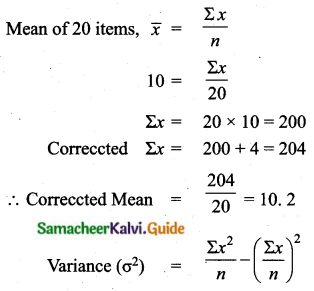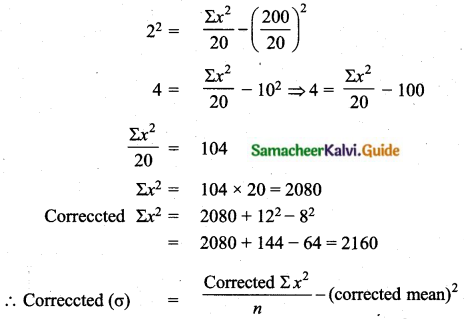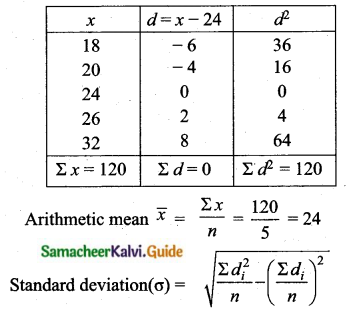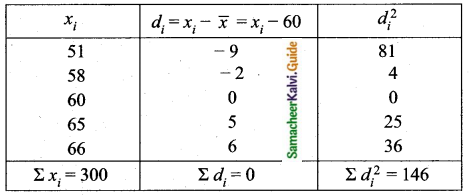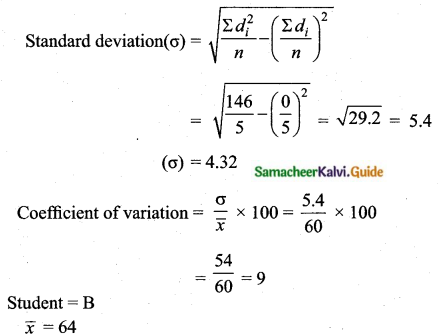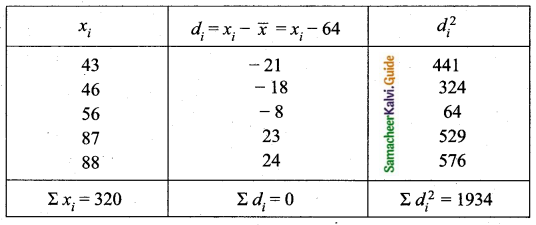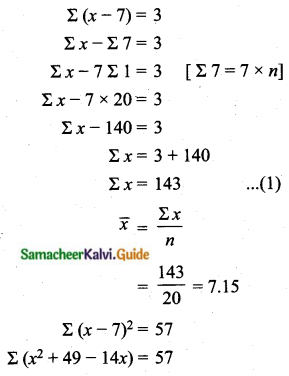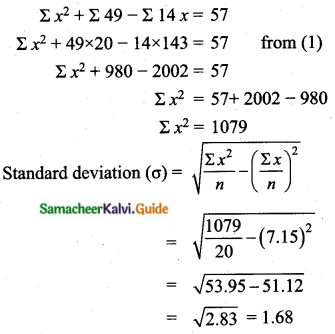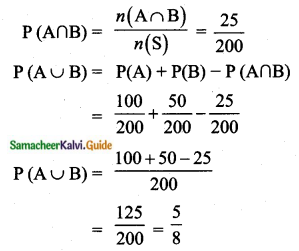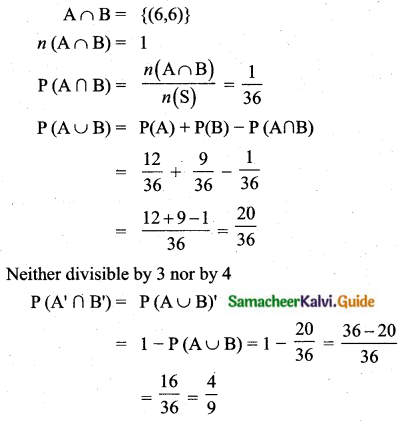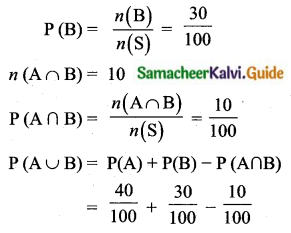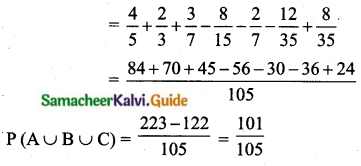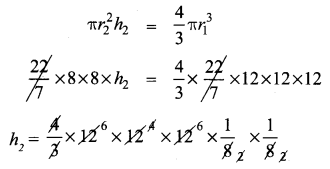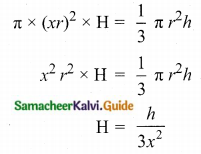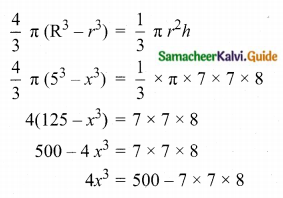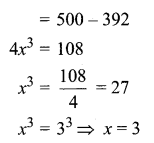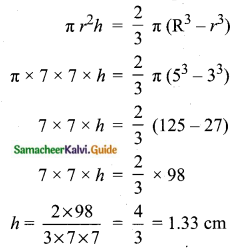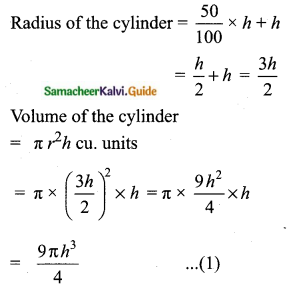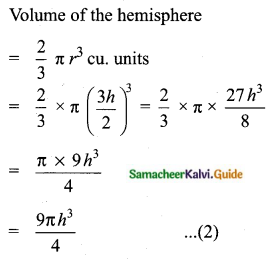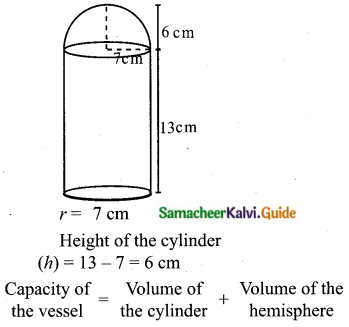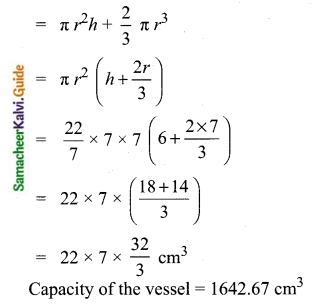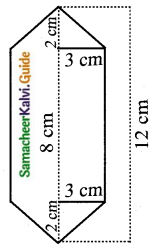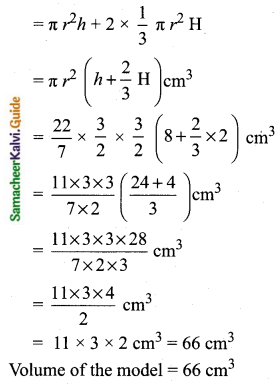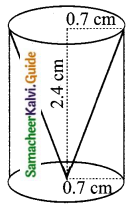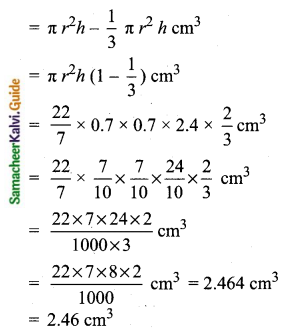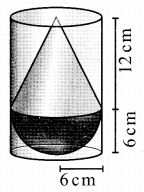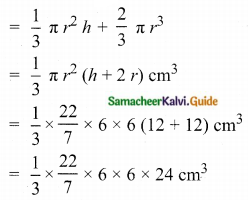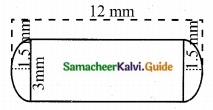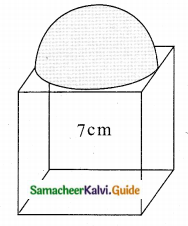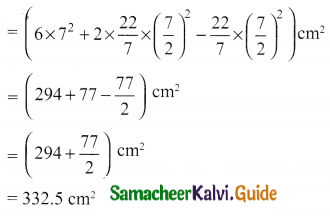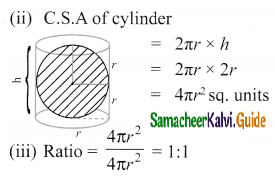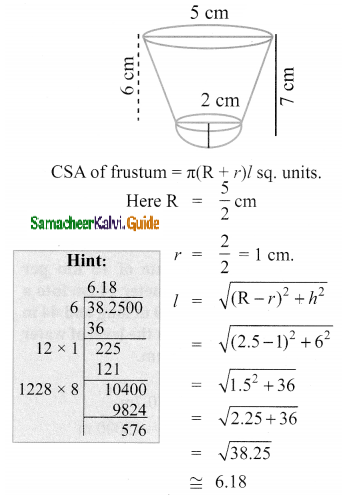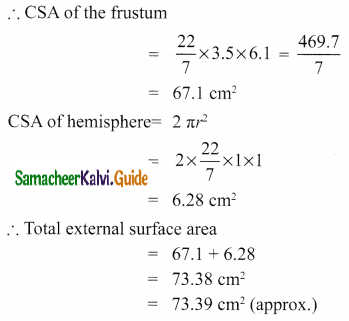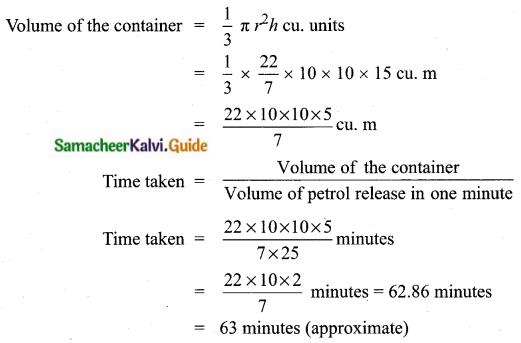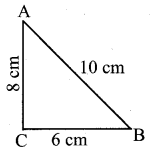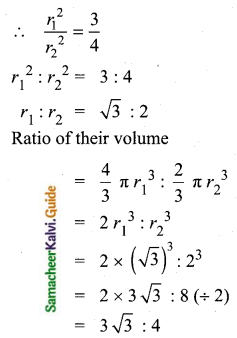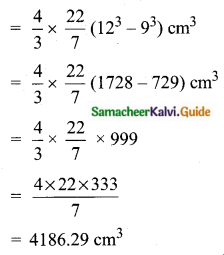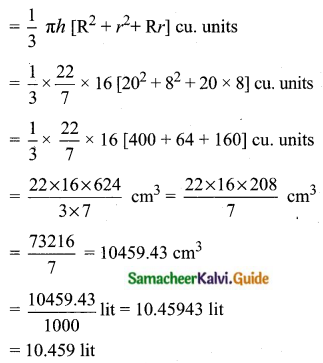Students can Download 10th Tamil Chapter 2.4 புயலிலே ஒரு தோணி Questions and Answers, Summary, Notes, Samacheer Kalvi 10th Tamil Guide Pdf helps you to revise the complete Tamilnadu State Board New Syllabus, helps students complete homework assignments and to score high marks in board exams.
Tamilnadu Samacheer Kalvi 10th Tamil Solutions Chapter 2.4 புயலிலே ஒரு தோணி
கற்பவை கற்றபின்
Question 1.
கடலில் புயலின் தாக்கத்தினால் ஏற்பட்ட பதற்றத்தை வெளிப்படுத்த அடுக்குத் தொடர்களும் வருணனைகளும் எவ்வாறெல்லாம் பயன்பட்டுள்ளன என்பது குறித்து வகுப்பில் பேசுக.
Answer:
- புயலின் சீற்றத்தினால் சிக்கித் தவித்தவர்கள் ‘இருள் நீங்கி சூரிய வெளிச்சத்தைக் கண்டதும் ‘சூரியன் சூரியன் சூரியன்’ எனச் சற்று பதற்றம் நீங்கக் கூறினர்.
- புயலில் சிக்கி ஐந்தாம் நாள் கரையைக் கண்டபோது “கரை கரை” எனச் சத்தமிட்டனர். மேற்கண்ட அடுக்குத் தொடர்கள் பதற்றத்தின் மத்தியில் காக்கப்படுவோம் என்னும் நம்பிக்கையில் கூறியதாகும்.
- எண்ணெய் பூசியவைப் போல் மொழுமொழுவென நெளிந்த அலைகள் என்ற வருணனை, அலையின் தன்மையை எடுத்துக்காட்டுகிறது.
- வானைப் பிளந்த பின்னல் கீற்றுகள். வானம் உடைந்து வெள்ளம் கொட்டியது என்ற வருணனைகள் மின்னலின் அகோர ஒளி வீச்சையும், மழைப் பொழிவின் அளவு மற்றும் வேகத்தைக் குறிப்பதாய் அமைந்துள்ளது.
- தலைக்கு மேல் வெள்ளம்; வானுடன் கடல் கலந்து வளியுடன் இணைந்து விட்டது என்னும் தொடர் மூலம் புயலில் தோணியின் நிலை என்னவாயிருக்கும் என்பதை உணர்த்துகிறது.
![]()
Question 2.
நீங்கள் எதிர்கொண்ட இயற்கை இடர் குறித்து விவரித்து எழுதுக.
(மழை, வெள்ளம், புயல், வறட்சி)
Answer:
மழை :
தவறிப்பெய்த பருவமழையால் அறுவடைக்குத் தயாராய் இருந்த பயிர்கள் நீரில் நனைந்து நாசம் அடைந்தன. போக்குவரத்து பாதிப்புகளால் மக்கள் பல இன்னல்களுக்கு ஆளாயினர். மழைப் பொழிவின் காரணமாக மக்கள் பலர் வெளியே செல்ல முடியாததாலும். மின்சாரம் தடை செய்யப்பட்டதாலும் பல தொழில்கள் முடங்கின.
புயல் :
சென்னைக்குத் தென்கிழக்கே 260 கி.மீ தொலைவிலும், நாகைக்கு வடகிழக்கே 180 கி.மீ தொலைவிலும் மையம் கொண்டிருந்த கஜா புயல், மேற்கு தென் மேற்குத் திசையில் நகர்ந்து கடலூர் பாம்பன் இடையே நாகைக்கு அருகே மணிக்கு 111 கி.மீ வேகத்தில் கரையைக் கடந்தது. புயலானது கரையைக் கடந்த போதிலும் டெல்டா மற்றும் கரையோர பகுதி மக்களின் கவலை இன்னும் கடந்து போகவில்லை. ஏனெனில் விவசாயிகள், மீனவர்கள் ஆகியோரின் வாழ்வாதாரமே அழிந்தது.
![]()
வெள்ளம்:
கடந்த 2018 ஆம் ஆண்டு கேரளாவில் ஏற்பட்ட வெள்ளமானது அம்மாநிலத்தையே புரட்டிப் போட்டது. தென்மேற்கு பருவக்காற்றினால் ஏற்பட்ட மழைப்பொழிவே இதற்குக் காரணம். வெள்ளத்தினால் ஏற்பட்ட மண்சரிவில் சிக்கி பலர் உயிரிழந்தனர். இதில் கேரளாவில் உள்ள இடுக்கி, வயநாடு கோழிக்கோடு உட்பட 10 மாவட்டங்கள் பெரிதும் பாதிக்கப்பட்டன. மலைப்பாதையில் ஏற்பட்ட மண்சரிவினால் போக்குவரத்து பாதிக்கப்பட்டது.
வறட்சி:
இந்திய வானிலைத் துறையின் கூற்றுப்படி 10 சதவிதத்திற்கும் குறைவான மழைப்பொழிவு இருக்குமேயானால் அந்நாட்டை வறட்சியால் பாதிக்கப்பட்ட நாடு எனலாம். பற்றாக் குறையான மழைப் பொழிவே வறட்சிக்குக் காரணம் பருவகாலம் பொய்த்துப் போவதால் உருவாகும்.
மழைப் பொழிவின்மை , பருவகால மாறுபாடுகள், காடுகள் அழிவு, சுற்றுச்சூழல் சீர்கேடு, அதிக அளவு ஆவியாதல், மோசமான நில மேலாண்மை , அதீத மேய்ச்சல், மண் அரிப்பு ஆகியன வறட்சி ஏற்பட முக்கியக் காரணங்களாகும்.
பாடநூல் வினாக்கள்
சிறுவினா
Question 1.
மழை நின்றவுடன் புலப்படும் காட்சியை வருணித்து எழுதுக.
Answer:
குறிப்பு : இலைகளில் சொட்டும் நீர் – உடலில் ஓடும் மெல்லிய குளிர் – தேங்கிய குட்டையில் ‘சளப் தளப்’ என்று குதிக்கும் குழந்தைகள் – ஓடும் நீரில் காகிதக் கப்பல்.
- • தேனடையிலிருந்து விழும் தேன் துளியைப் போல சில மணித்துளிகளுக்கு ஒரு முறை நீர் சொட் சொட்’ என விழுந்தது.
- விரும்பத்தக்க தென்றலைப் போலவும் மயிலிறகின் வருடல் போலவும் மெல்லிய குளிர் உடலில் ஓடும்.
- நீர் உள்ள தடாகத்திலே பல வகையான மீன்களும் தவளைகளும் தாவிக்குதிக்கும் போது ஏற்படும் ஓசையை ஒத்த ‘சளப் தளப்’ என்ற சத்தத்துடன் தேங்கிக் கிடந்த நீர்க் குட்டையில் குழந்தைகள் குதித்து விளையாடி மகிழ்ந்தனர்.
- அமைதியான நீரோட்டம் கொண்ட நதியானது இழுத்து வரும் சிறுசிறு கட்டை மற்றும் இதர பொருட்கள் போல குழந்தைகள் ஓடும் நீரில் காகிதக் கப்பல்களை விட்டு மகிழ்ந்தனர்.
![]()
நெடுவினா
Question 1.
புயலிலே ஒரு தோணி கதையில் இடம்பெற்றுள்ள வருணனைகளும் அடுக்குத் தொடர்களும் ஒலிக்குறிப்புச் சொற்களும் புயலில் தோணி படும்பாட்டை எவ்வாறு விவரிக்கின்றன?
Answer:
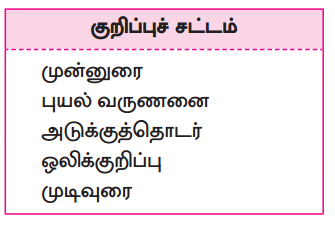
முன்னுரை:
மனித வாழ்க்கை போல இயற்கையும் இன்பம் துன்பம் நிறைந்தது. அந்த வகையில் ‘புயலிலே ஒரு தோணி’ என்ற புதினத்தில், பா.சிங்காரம் எழுதியுள்ள வருணனை, அடுக்குத்தொடர் மற்றும் ஒலிக்குறிப்பும் பற்றி இக்கட்டுரையில் காண்போம்.
புயல் வருணனை:
கொளுத்தும் வெயில் இமைக்கும் நேரத்தில் மறைந்துவிட்டது. பாண்டியன் அண்ணாந்து பார்த்தான். மேகங்கள் கும்மிருட்டு ஆனது. காற்றில்லாமல் ஒரே இறுக்கமானது. இடிமுழக்கத்துடன் மின்னல் வானத்தைப் பிளந்தது. வானம் உடைந்தன. வெள்ளம் கொட்டியது. சூறாவளி ஆடிக்குதித்தது.
வானுடன் கடல் கலந்துவிட்டது. மழை தெரியவில்லை. கடல் வெறிக் கூத்தாட்டத்தால் தொங்கான் மூழ்கி சிப்பங்கள் கடலில் நீந்துகின்றன. வானம், கடல், காற்று, மழை ஒன்று சேர்ந்து கூக்குரலிட்டது. வானம் பிளந்து நெருப்பைக் கக்கியது.
அடுக்குத்தொடர்:
தொங்கான் நடுநடுங்கித் தாவிதாவிகுதிகுதித்தது. பிறகு தொங்கான் குதித்து விழுந்து நொறுநொறு என்று நொறுங்கியது. சுழன்று கிறுகிறுத்துக் கூத்தாடியது.
![]()
ஒலிக்குறிப்பு:
தொங்கான் தாவி விழுந்தது, சுழல்கின்றது. கடலில் சிலுசிலு மரமரப்பு நொய்ங் புய்வ், நொய்ங், புய்ங் என இடி முழக்கம் செய்ய சீனப் பிசாசுகள் தாவி வீசுகின்றன. பகல் இரவாகி உப்புக் காற்று உடலை வருடியது.
முடிவுரை:
புயலுக்குப் பின்னால் ஐந்தாம் நாள் கரை தென்பட்டது. அடுத்தநாள் முற்பகல் பினாங்கு துறைமுகத்தை அணுகினார்கள். பிலவானிலிருந்து சுமத்ராவரை புயல் இப்படிப் பயமுறுத்தியது. இத்தகைய வருணனையோடு புயலில் தோணிபடும்பாட்டை அழகாய்’ விவரிக்கின்றார் பா. சிங்காரம்.
கூடுதல் வினாக்கள்
பலவுள் தெரிக
Question 1.
புயலிலே ஒரு தோணி என்பது
அ) சிறுகதை
ஆ) புதினம்
இ) காப்பியம்
ஈ) கவிதை
Answer:
ஆ) புதினம்
Question 2.
‘புயலிலே ஒரு தோணி’ என்னும் புதினத்தின் ஆசிரியர்
அ) ப. சிங்காரம்
ஆ) மு.வ.
இ) திரு.வி.க.
ஈ) அகிலன்
Answer:
அ) ப. சிங்காரம்
![]()
Question 3.
வடஇந்தியப் பெருங்கடலில் உருவாகும் புயல்களுக்குப் பெயர் வைக்கும் நடைமுறை தொடங்கப்பட்ட ஆண்டு
அ) 2004
ஆ) 2000
இ) 1999
ஈ) 1940
Answer:
ஆ) 2000
Question 4.
இலங்கை தந்த புயலின் பெயர்
அ) அக்னி
ஆ) ஆகாஷ்
இ) கஜா
ஈ) ஜல்
Answer:
இ) கஜா
Question 5.
‘கப்பித்தான்’ என்பது எதைக் குறிக்கிறது?
அ) தலைமை மாலுமி
ஆ) கப்பல்
இ) புயல்
ஈ) பயணி
Answer:
அ) தலைமை மாலுமி
![]()
Question 6.
‘தொங்கான்’ என்பது எதைக் குறிக்கிறது?
அ) தலைமை மாலுமி
ஆ) கப்ப ல்
இ) புயல்
ஈ) பயணி
Answer:
ஆ) கப்பல்
Question 7.
புலம்பெயர்ந்த தமிழர்களைப் பற்றிய முதல் புதினம்
அ) புயலிலே ஒரு தோணி
ஆ) தோணி வருகிறது
இ) கள்ளத் தோணி
ஈ) அகல்விளக்கு
Answer:
அ) புயலிலே ஒரு தோணி
Question 8.
தென்கிழக்காசியப் போர் மூண்டதில் மலேசியா, இந்தோனேசியா பகுதிகளில் நிகழ்வதாக உள்ள கற்பனைப் படைப்பு
அ) ஆறாம் திணை
ஆ) புயலிலே ஒரு தோணி
இ) பால் மரக்காட்டினிலே
ஈ) இவற்றில் எதுவுமில்லை
Answer:
ஆ) புயலிலே ஒரு தோணி
![]()
Question 9.
புயலிலே ஒரு தோணி என்னும் புதினத்தின் என்னும் அத்தியாயத்தின் சுருக்கப்பட்ட பகுதி பாடமாக வைக்கப்பட்டுள்ளது. அ) காவியக்கூத்து
ஆ) கலைக்கூத்து
இ) கடற்கூத்து
ஈ) இசைக்கூத்து
Answer:
இ) கடற்கூத்து
Question 10.
பா. சிங்காரத்தின் ஊர் – மாவட்டம்)
அ) சிங்கம்புணரி, சிவகங்கை
ஆ) உறையூர், திருச்சி
இ) மேட்டுப்புதூர், ஈரோடு
ஈ) தென்காசி, திருநெல்வேலி
Answer:
அ) சிங்கம்புணரி, சிவகங்கை
![]()
Question 11.
ப. சிங்காரம்
இந்தோனேசியா சென்றார்.
அ) வேலைக்காக
ஆ) தூதராக
இ) ஆய்வாளராக
ஈ) அகதியாக
Answer:
அ) வேலைக்காக
Question 12.
ப. சிங்காரம் பணியாற்றிய இதழ்
அ) தினகரன்
ஆ) தினமணி
இ) தினத்தந்தி
ஈ) தினபூமி
Answer:
இ) தினத்தந்தி
Question 13.
ப. சிங்காரத்தின் சேமிப்பான இலட்சம் ரூபாயை மாணவர்களின் கல்வி வளர்ச்சிக்காக வழங்கினார்.
அ) ஏழரை
ஆ) ஆறரை
இ) நான்கரை
ஈ) பத்து
Answer:
அ) ஏழரை
![]()
Question 14.
‘பல் பழப் பலவின் பயங்கெழு கொல்லி’ என்று குறிப்பிடும் நூல்
அ) புறநானூறு
ஆ) அகநானூறு
இ) கலித்தொகை
ஈ) நாலடியார்
Answer:
ஆ) அகநானூறு
Question 15.
கொல்லிமலை அமைந்துள்ள மாவட்டம்
அ) தர்மபுரி
ஆ) சேலம்
இ) நாமக்கல்
ஈ) திண்டுக்கல்
Answer:
இ) நாமக்கல்
![]()
Question 16.
புதுதில்லியில் உள்ள உலக வானிலை அமைப்பின் மண்டலம் சிறப்பு வானிலை ஆய்வுமையம் 2004 செப்டம்பரில் இருந்து புயல்களுக்குப் பெயர் வைக்க பெயர்களைப் பட்டியலிட்டுள்ளது.
அ) 62
ஆ) 64
இ) 60
ஈ) 54
Answer:
ஆ) 64
Question 17.
‘பெய்ட்டி ‘ புயலின் பெயரைத் தந்த நாடு
அ) இந்தியா
ஆ) இலங்கை
இ) ஓமன்
ஈ) தாய்லாந்து
Answer:
ஈ) தாய்லாந்து
Question 18.
புயலுக்கு இந்தியா தந்துள்ள பெயர்களில் நான்கு பூதங்களைக் கண்டறி.
அ) அக்னி, ஆகாஷ், பிஜ்லி, ஜல்
ஆ) மேக், அக்னி, ஜல்
இ) மேக், சாகர், வாயு, ஆகாஷ்
ஈ) பிஜ்லி, அக்னி, மேக், கஜா
Answer:
அ) அக்னி, ஆகாஷ், பிஜ்லி, ஜல்
![]()
Question 19.
வானிலை ஆய்வாளர்கள், பொதுமக்கள், கடல் மாலுமிகள் ஆகியோர்க்கு வானிலை எச்சரிக்கையைப்
புரிந்து கொண்டு செயல்படக் கொடுக்கப்படுவது
அ) புயலின் பெயர்கள்
ஆ) கலங்கரை விளக்கம்
இ) நிவாரண உதவி
ஈ) திசைகாட்டும் கருவி
Answer:
அ) புயலின் பெயர்கள்
Question 20.
நூற்றாண்டின் தொடக்கத்தில் தெற்காசிய நாடுகளில் பல்வேறு நாடுகளைச் சேர்ந்தவர்கள் குடியேறினர்.
அ) பதினெட்டாம்
ஆ) பத்தொன்பதாம்
இ) பதினாறாம்
ஈ) பதினேழாம்
Answer:
ஆ) பத்தொன்பதாம்
Question 21.
ப. சிங்காரம் இரண்டாம் உலகப் போர் நிகழ்ந்த போது இருந்த இடம்
அ) இந்தோனேசியா, மெபின் நகர்
ஆ) இலங்கை, யாழ்ப்பாணம்
இ) மலேசியா, கோலாலம்பூர்
ஈ) சீனா, பெய்ஜிங்
Answer:
அ) இந்தோனேசியா, மெபின் நகர்
![]()
Question 22.
பொருத்திக் காட்டுக.
i) கப்பித்தான் – 1. இந்தோனேசியாவிலுள்ள இடம்
ii) தொங்கான் – 2. மீன் வகை
iii) அவுலியா – 3. கப்பல்
iv) பிலவான் – 4. தலைமை மாலுமி (கேப்டன்)
அ) 4, 3, 2, 1
ஆ) 3, 2, 1, 4
இ) 2, 1, 3, 4
ஈ) 3, 4, 2, 1
Answer:
அ) 4, 3, 2, 1
Question 23.
“ஓடி வாருங்கள்! இங்கே ஓடி வாருங்கள்! லெக்காஸ், லெக்காஸ்! என்று கத்தியவன்
அ) பாண்டியன்
ஆ) கப்பித்தான்
இ) ஜப்பானிய அதிகாரி
ஈ) குஸ்டாவ்
Answer:
ஆ) கப்பித்தான்
![]()
Question 24.
‘தமிரோ’ என்று உறுமியவர்
அ) மாலுமி
ஆ) ஜப்பானிய அதிகாரி
இ) சீன அதிகாரி
ஈ) பாண்டியன்
Answer:
ஆ) ஜப்பானிய அதிகாரி
Question 25.
வானிலை மாற்றத்தைக் கண்டு எழுந்து போய்ப் பார்த்தவன்
அ) மாலுமி
ஆ) பாண்டியன்
இ) கப்பித்தான்
ஈ) சேரன்
Answer:
ஆ) பாண்டியன்


